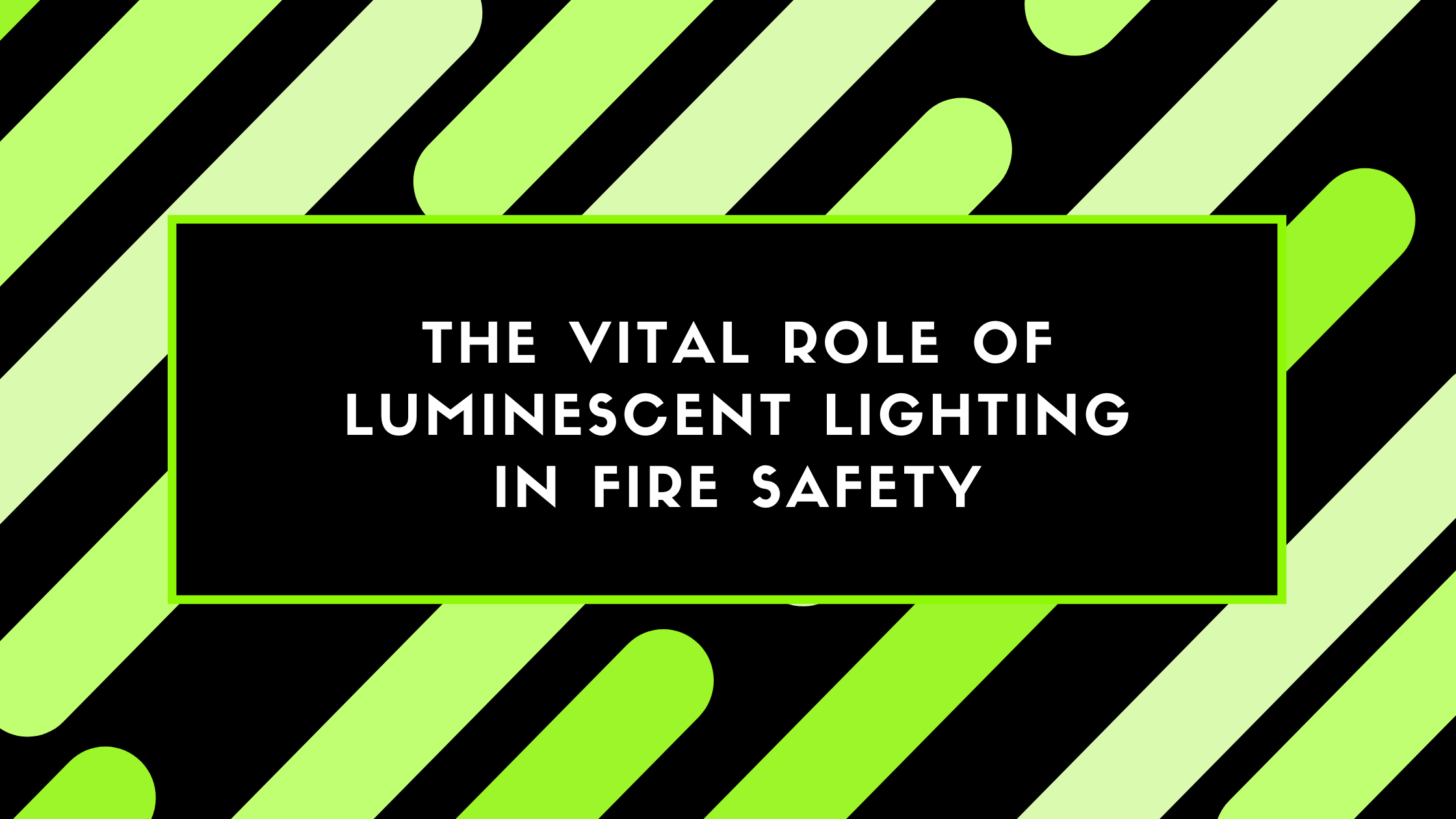The Vital Role of Luminescent Lighting in Fire Safety

When disaster strikes, such as during a fire, the environment can quickly become chaotic and disorienting. Thick smoke, power failures, and the stress of an emergency situation can make it difficult for occupants to find their way to safety. This is where luminescent lighting plays a crucial role in fire safety, guiding people to exits and ensuring that evacuation routes are clearly visible.
What is Luminescent Lighting?
Luminescent lighting refers to a type of lighting that emits light through luminescence, which is the process of producing light without generating significant heat. Unlike traditional incandescent lighting, which relies on heating a filament to produce light, luminescent lighting generates light through chemical reactions, electrical excitation, or other means. Common examples of luminescent lighting include fluorescent lights, LEDs (light-emitting diodes), and phosphorescent materials that glow in the dark. These lighting technologies are known for being energy-efficient and long-lasting.
The Purpose of Emergency Lighting
The primary purpose of luminescent lighting is to enable safe evacuation during emergencies, such as fires, power outages, or natural disasters. In situations where visibility is compromised, this lighting become essential for:
-
Guiding Evacuation: Luminescent lighting mark the path to exits, reducing confusion and helping people evacuate the building quickly and safely.
-
Preventing Panic: By providing a clear, illuminated route, luminescent lighting can help reduce panic and keep occupants calm during an emergency.
-
Compliance with Regulations: Most building codes and fire safety regulations require the installation of luminescent lighting in buildings over 75 feet high. This ensures that buildings are equipped to handle emergencies and that occupants are protected.
-
Supporting Emergency Services: Luminescent lighting not only aids in evacuation but also assists firefighters and rescue teams by illuminating their way as they work to control the situation and save lives.
The Role of Fire Safety in Building Design
Fire safety encompasses a range of measures designed to prevent, detect, and respond to fires. It includes everything from fire-resistant building materials to sprinkler systems, fire alarms, and, of course, emergency lighting. Together, these elements form a comprehensive safety strategy that minimizes the risk of injury or death during a fire.
Effective fire safety planning considers all aspects of a building's use and design. For example, it takes into account the number of occupants, the building’s layout, and the potential hazards present. Luminescent lighting is a critical component of this plan in some buildings, ensuring that even in the worst-case scenario, there is a clear and safe path to exit.
In an emergency, every second counts. Luminescent lighting is a silent guardian, providing the necessary illumination for safe and swift evacuation. It’s an essential aspect of fire safety that protects lives by guiding occupants out of harm’s way and supporting first responders as they work to control the situation. By ensuring that luminescent lighting is installed and maintained, building owners and managers play a vital role in safeguarding the people within their walls.
Nystrom offers a complete line of photoluminescent egress path marking systems that coordinate with
Safe-T-Lume Stair Treads and Nosings. Required by International Building and Fire Codes, these products
help guide pedestrians safely through egress stairways. For more information on product options, specifications, documentation or more, please reach out to our Customer Sales & Support team or visit the website.



